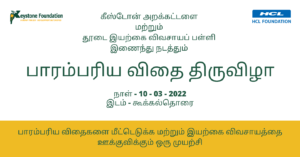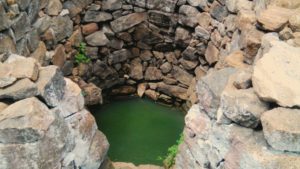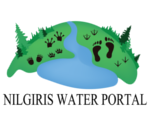The Nilgiris, Blue Mountains of South India, is located at the junction of the Eastern Ghats and the Western Ghats, the two prominent mountain ranges that run almost parallel to the coastlines of Peninsular India.
The high hills are a wonderful gift of Nature. Widespread forests and abundant water sources make the hills a fountainhead of the plains below. Water plays a crucial role in the lives of the people and animals, used as it is not only for drinking, but also serve as the upstream source to four river basins serving the states of Tamil Nadu, Karnataka and Kerala. Water as a natural resource plays a vital role in the ecology and economy of the district – be it in the large scale hydro power, the tea estates or in the forest dweller’s livelihood system. The region is also home to unique wetlands that are the source of sustenance of animals and human communities.
These rivers and wetlands are under threat today. Over the years these natural systems and watersheds have seen a lot of change in the Nilgiris. Building a series of hydro electric projects, tunneling the water to different areas for irrigation, building reservoirs, planting the upper areas with commercial pulpwood species and replacing natural grasslands with tea and marshes with vegetables has changed the district’s water regime. Besides affecting availability, the management of the resource has shifted from local communities and indigenous groups to the state. This has resulted in several community based systems to collapse and increased the dependence on a centralized body.
Land use changes have affected the original landscape of the entire hills district and are continuing even today. Faced with an alarming scenario, Keystone felt an urgent need to work on the aspects of water management, protection of resources and ensuing awareness amongst dependent communities. The process began with the Nilgiri Water Resources Project in year 2002 and is ongoing today. In between, we did a thorough sampling of water resources, did a survey of wetlands and work with indigenous people for the protection and management of water sources. The process continues and the need for more awareness on water management continues too….

First step towards setting up
Farmers Field School in Kookalthorai
Here’s some good news from Kookalthorai Valley. As a first step towards setting up a Farmers Field School, Keystone Foundation hosted a traditional seed festival
Rainfall across the Nilgiri Biosphere Reserve
Rainfall Data from automated and manual rain gauges collected by Keystone Foundation with help of community volunteers.The rain gauge IDs used in the visualization below

Water Quality and Quantity Monitoring in Wells in Aracode Region
Aracode Aracode region is the Eastern most part of the Nilgiris which falls under the Kotagiri Taluk. There are Kurumba and Irula settlements in the

